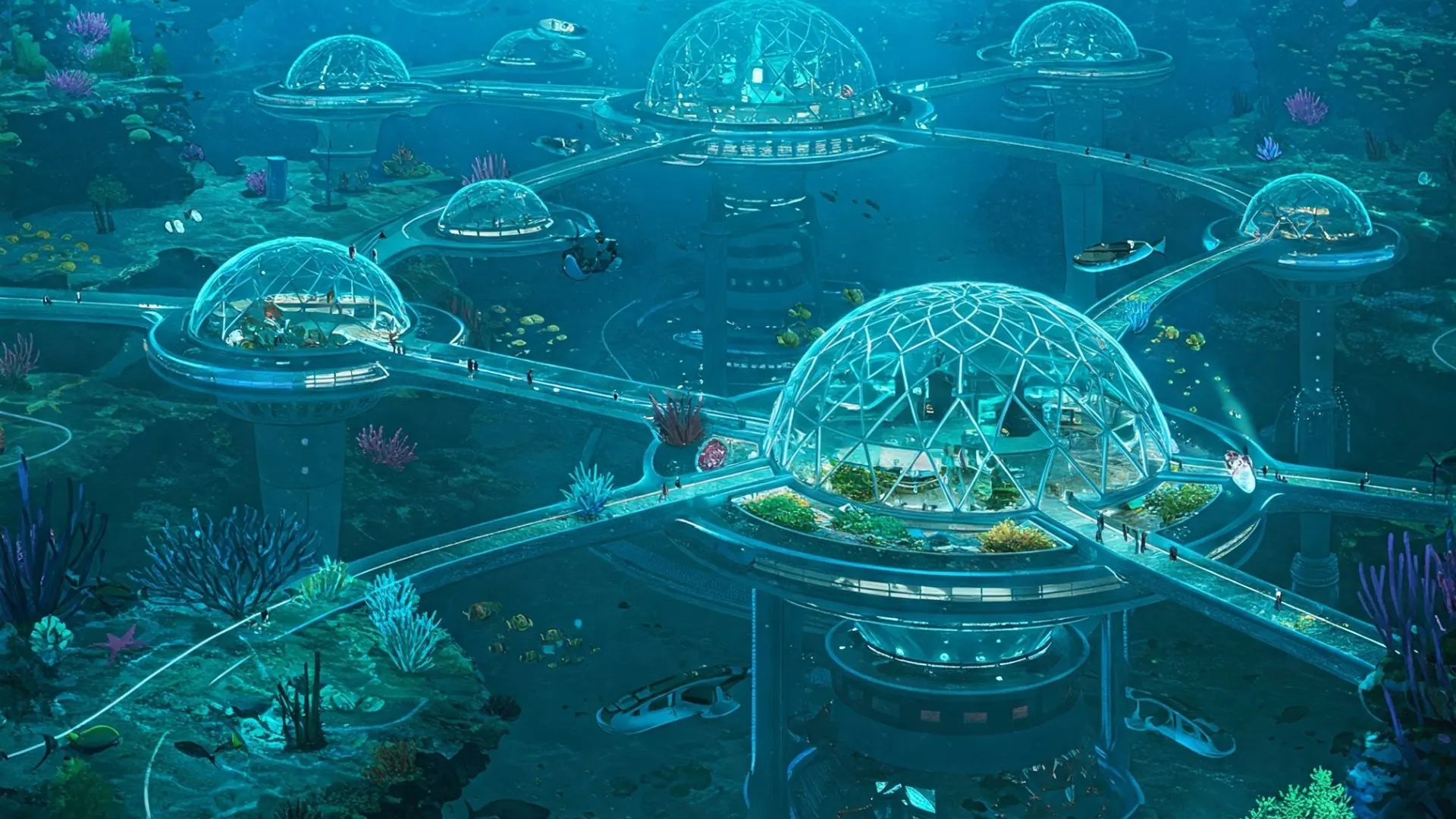Introduction
Is it possible for people to live underwater by 2027? As rising sea levels put coastal towns at risk, researchers and designers are leading the way in creating futuristic ocean homes. From the Ocean Spiral in Japan to the eco-friendly floating city in the Maldives, cutting-edge projects aim to build self-sufficient underwater communities in the next few years. These bold plans use see-through aluminum structures closed systems that recycle resources, and ocean power to tackle deep-sea problems. While entire underwater cities might still be far off, 2027 could see the first long-term underwater hotels and science bases – key steps toward ocean-based urban living. This piece looks at the new tech current projects, and real chance of humanity’s next big move: living underwater for good.
1. The Vision: Why Build Underwater Cities?

- Climate Resilience – Rising oceans are threatening coastal megacities; underwater habitats may provide haven.
- Overpopulation Solutions – 70% of the Earth is ocean—untapped real estate for future development.
- Scientific Exploration – Permanent underwater laboratories would change the face of marine biology and geology.
2. Existing Projects Pioneering the Way
A. Ocean Spiral (Japan, Shimizu Corp)
- A $26 billion proposal for a 500-inhabitant city at 1,500 ft depth.
- Employs deep-sea pressure to provide energy and produce food through underwater farms.
B. Floating City (Maldives, Target Year 2027)
- A floating + underwater hybrid community to prevent sinking land.
- First phase (5,000 residents) due to be completed by 2027.
C. Proteus (Fabien Cousteau’s Underwater Lab)
- “The ISS of the ocean” for long-term research.
- Could become residential pods by late 2020s.
3. The Technology Making It Possible
- Transparent Aluminum – Stronger than steel, resists deep-sea pressure.
- Closed-Loop Ecosystems – AI-controlled oxygen/water recycling.
- Wave & Solar Hybrid Energy – Utilizes Ocean currents + surface solar.
- 3D-Printed Coral Reefs – Artificial reefs to harbor marine life.
4. Biggest Challenges
- Psychological Impact – Human mental well-being in cramped, dark spaces.
- Maintenance Costs – Saltwater corrosion and high-pressure maintenance.
- Legal Gray Zones – No global laws for underwater property rights.
5. Will 2027 Be the Breakthrough Year?
- Although full cities won’t happen by 2027, look for:
- First permanent underwater hotels (e.g., The Muraca, Maldives)
- Extended research habitats (such as Proteus)
- Floating hybrid districts (Maldives’ project)
Actual underwater metropolises will take until 2035–2040, but 2027 will be pivotal milestones.
Conclusion: Diving Into the Future
Underwater cities stand as humanity’s next big step both daring and essential. While obstacles exist, 2027 might be the year we begin to build ocean communities for real.
“Underwater Cities by 2027: The Future of Oceanic Living” isn’t just a dream anymore, but a soon-to-be reality taking form through advanced engineering and plans to withstand climate change.

